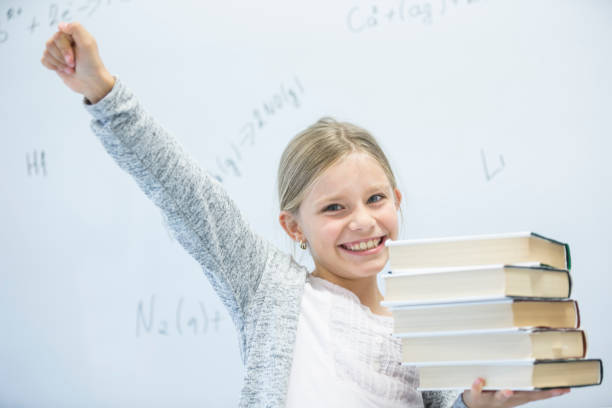The COVID-19 pandemic caused a significant disruption in K–12 education. From school closures to inconsistent access to remote learning, students across all grade levels experienced setbacks in academic progress, social development, and emotional well-being.
Now, schools face a critical mission: learning recovery K–12. Whether you’re an educator, administrator, or parent, understanding how to close these learning gaps is essential. This article explores evidence-based strategies, tools, and supports that can help students catch up and thrive in a post-pandemic world.
Let’s explore how we can meet learners where they are and help them move forward with confidence.
What Is Learning Recovery in K–12?
Learning recovery refers to intentional efforts to restore students’ academic growth, especially in core subjects like math, reading, and science, after extended disruptions.
Stat Insight: According to McKinsey & Company, U.S. students were on average 4–5 months behind in math and 3 months behind in reading after COVID.
This gap is especially noticeable among marginalized and low-income students, making learning recovery K–12 both an equity and academic challenge.
Identifying the Impact: Where Learning Loss Hits Hardest
Academic Areas Most Affected
- Mathematics: Problem-solving and foundational concepts were difficult to teach remotely.
- Reading: Younger students missed key literacy milestones.
- Science & Writing: Less hands-on and collaborative work led to lower engagement.
Groups Most Impacted
- English Language Learners (ELL)
- Students with disabilities
- Low-income and rural students
- Elementary-level learners are missing early skill-building years
Tiered Intervention: A Multi-Level Approach
Schools that succeed in K–12 learning recovery often use MTSS (Multi-Tiered System of Supports) to tailor help based on student needs.
| Tier | Support Level | Example |
|---|---|---|
| Tier 1 | Whole Class | Quality core instruction, SEL, formative assessments |
| Tier 2 | Small Groups | Targeted tutoring, skill-specific remediation |
| Tier 3 | Individual | 1:1 support, IEP modifications, intensive intervention |
This structure ensures all students receive appropriate help without overloading resources.
High-Impact Tutoring: A Game Changer
High-dosage tutoring, defined as 3+ sessions per week with trained tutors, has emerged as one of the most effective strategies for learning recovery.
Why It Works:
- Personalized instruction
- Immediate feedback
- Builds student confidence
- Strong relationships between the tutor and learner
Tip: Prioritize small-group tutoring in math and reading for early elementary students to maximize results.
Leveraging Summer and After-School Programs
Summer learning loss is real, and was worsened by the pandemic. Districts can use after-school and summer programming to close gaps without disrupting the regular school day.
Effective Program Elements:
- Academic focus with enrichment (STEM, arts, SEL)
- Low student-teacher ratios
- Consistent attendance and incentives
- Family engagement
Using Data to Drive Instruction
Instructional decisions must be grounded in real-time, meaningful data.
Key Tools:
- Diagnostic Assessments (MAP, i-Ready, STAR)
- Progress Monitoring (exit tickets, formative checks)
- Data Chats with students and families
Use this data to differentiate instruction and track growth over time.
Supporting Social and Emotional Learning (SEL)
Learning doesn’t happen without emotional safety. COVID triggered increased anxiety, isolation, and trauma in students.
SEL Integration Strategies:
- Morning meetings and check-ins
- Mindfulness and coping skills
- Trauma-informed practices
- Restorative circles and peer mentoring
When students feel connected and safe, they’re more open to learning and risk-taking in the classroom.
Family and Community Engagement
Learning recovery doesn’t stop at the classroom door. Families are vital partners.
How to Involve Families:
- Hold virtual or in-person workshops on supporting learning at home
- Share data in clear, friendly ways
- Include family voice in recovery planning
Community partners like libraries, local businesses, and nonprofits can also support enrichment and resources.
Funding and Policy Support for Learning Recovery
Federal and state funding through ESSER (Elementary and Secondary School Emergency Relief) has enabled districts to hire staff, purchase technology, and expand programs.
Use funds to:
- Hire interventionists
- Expand tutoring
- Invest in teacher PD focused on recovery
Make sure plans are sustainable beyond temporary grants.
Read More: 15 Top Educational Websites for Kids in 2025
Conclusion
Addressing the lingering effects of COVID on students is one of the most urgent challenges in K–12 education today. But with a thoughtful, multi-layered approach including high-impact tutoring, SEL support, family engagement, and data-driven instruction, learning recovery K–12 is not only possible but powerful.
By acting with intention, collaboration, and compassion, we can help every student regain their momentum and move forward with confidence.
FAQs
1. What is learning recovery in K–12?
It refers to efforts to help students catch up academically and socially after learning disruptions, especially due to COVID-19.
2. Which students experienced the most learning loss?
Younger students, English language learners, and low-income communities were most affected by remote learning challenges.
3. What is the best way to address learning gaps?
High-dosage tutoring, small group instruction, and targeted SEL support are among the most effective strategies.
4. How can parents support learning recovery?
Stay involved in communication with teachers, encourage reading at home, and use educational tools or tutoring.
5. What role does SEL play in recovery?
Social and emotional support is essential for rebuilding student confidence, focus, and motivation to learn.
